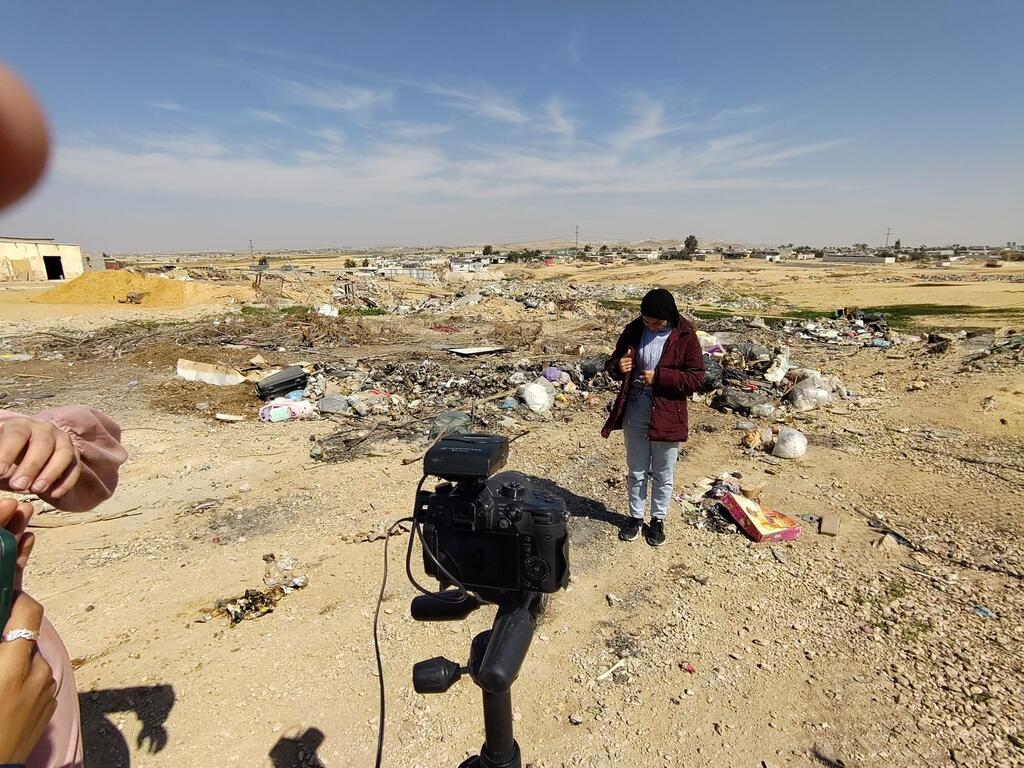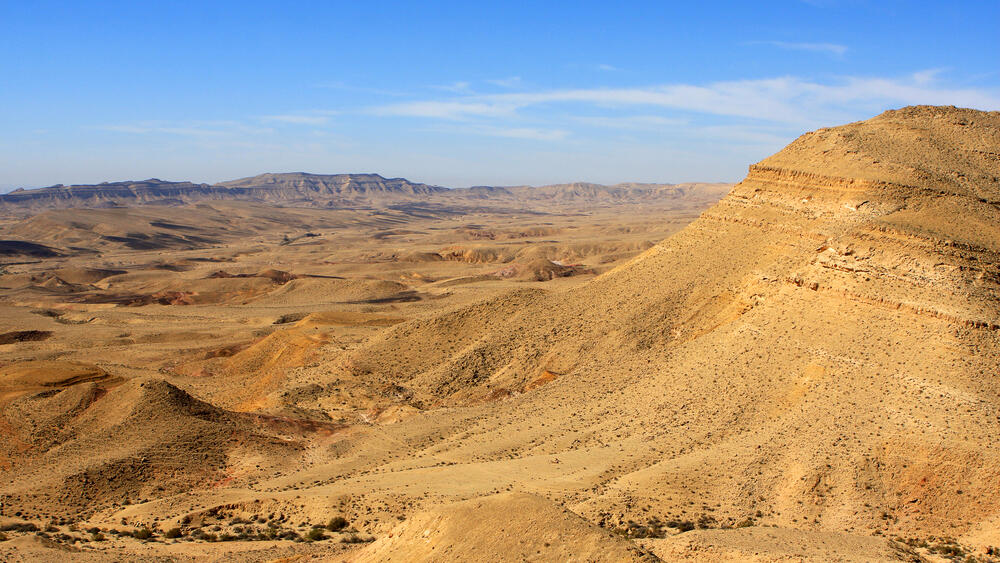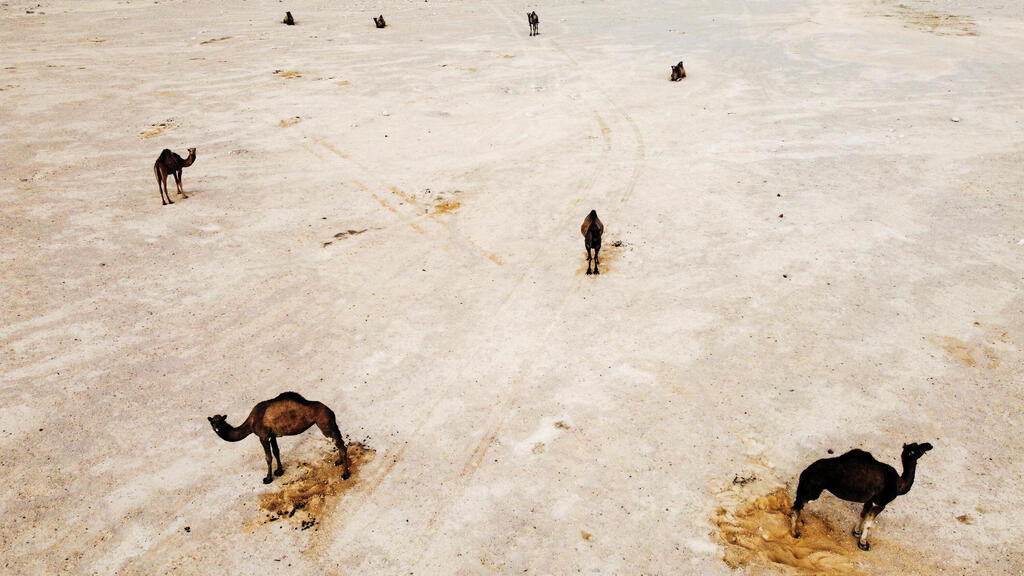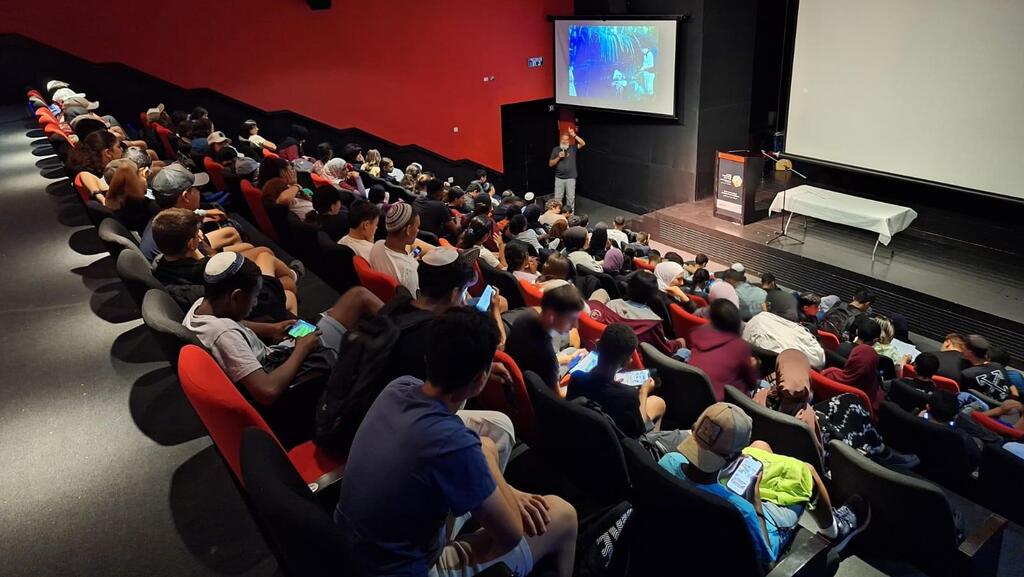“The Desert Around Me”
(Menachem Begin school students - Dimona)
“The future is no longer here,” declares the winning video of the competition hosted by the initiative, “The Desert Around Me.” What exactly does this mean? As the video progresses, the intentions of its creators—students from Sha’ar Ha’Negev Middle School—are elucidated.
More stories:
The video depicts the future of winged desert animals in Israel, such as the barn owl, partridge, and eagle, who if we are not proactive and wise in protecting them, in the future they will become a distant memory, seen only in nature museums. The students summed up their video with that precise sentiment: “We want nature – not taxidermy.”
5 View gallery
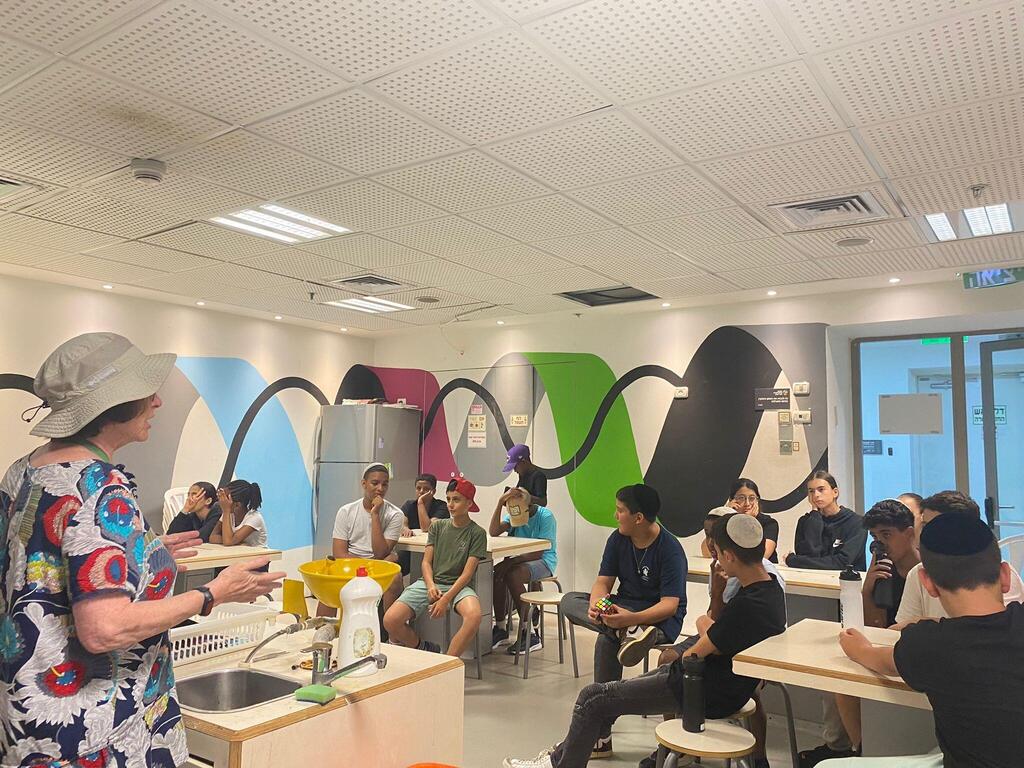

Enrichment days, in which all of the students in the project met
(Photo: The Desert Around Me)
The creators of the video in question are participants in “The Desert Around Me,” a new initiative from The Israel Society of Ecology and Environmental Studies, led by Zavit in Education and The Globe Program, an environmental education program of the Education Ministry in cooperation with the Environmental Protection Ministry which is an initiative of NASA that is run by the center for scientific teleprocessing research in geological sciences at the University of Colorado.
The new initiative seeks to raise awareness among Jewish and Arab teenagers, who live in the desert, about humans’ impact on the desert landscape.
The desert isn’t barren of challenges
The desert’s ecological system is one of the most wonderous in the world. The system is characterized by rare and wild nature, as well as the unique and reciprocal relationships between the creatures who live in it, creatures who have been conditioned to this arid terrain.
The desert is not foreign to the citizens of Israel; approximately half of our nation’s land is a desert, and in the last few years, our desert has gone through complex developments: The growing human presence in the area—both residents and travelers—has impacted the environment and damaged both the land itself and its habitants, plants and animals alike.
This detrimental impact manifests itself in several ways; for instance, an Israeli study found that the light pollution in this region hurts the drinking habits of desert bats, thus negatively affecting these species.
In conjunction with manmade impact on the desert region, the climate crisis, which is altering the characteristics of vast and wide areas across the globe, may lead to desertification: a process in which a dry area turns even more arid; in such a case even animals who have been accustomed to desert conditions must readjust themselves to survive in an even more barren environment.
These processes—and the imperativeness of being aware of them—birthed the initiative of “The Desert Around Me,” in which took part some 200 middle schoolers from six different schools from various settlements: Dimona, Sha’ar Ha’Negev, Kiryiat Malachi, Abu Queider, Abu Talul and Abu Qrenat (the latter three being Bedouin villages).
The program focused on core environmental issues on the subject of: the relationship between the climate crisis and the desert, the process of desertification, hunting, poisoning and the effect of invasive species on the region, the presence of travelers in the desert, and mass events such as festivals and concerts—generating waste, air pollution, noise pollution and more.
The students dove into each of the issues, watched lectures given by experts and researchers (who also live in the desert), and eventually received film and editing lessons which enabled them to create their video projects on these subjects.
“We wanted to expose these students to information about the desert terrain they live in, to raise their awareness of the different processes taking place around them through lessons and meetings with scientists from the field, and encourage them to be actively involved in helping their surrounding habitat,” says Dikla Gish, the initiative’s pedagogical coordinator, and a science and biology teacher and administrator at Irony H school in Haifa.
“Our goal is for the students to spread and make this information accessible to the general public, particularly with fellow teenagers.”
The desert belongs to all of us
Towards the end of the program, video creators, Yaron Ben-Horin and Bar Stefansky, ran film workshops for the students with the purpose of giving them the tools to make short videos pertaining to the subjects they learned about, such as waste in public spaces, desert animal preservation and more.
“This is an initiative that addresses diverse populations and enables them to obtain the tools necessary to induce change,” claims Stefansky, a video creator from Creative Change.
“In the workshops, we taught the students how change can be made in a community and improve its quality of life—using video; for instance, the group of teenagers that won third place in the competition, whose living surrounding accumulated a vast amount of waste, created a video in Arabic about the matter, which could raise awareness among residents of the area and may even influence decision makers to put in place the infrastructure for a waste disposal system in the region.”
Meeting in the desert
One of the program’s core characteristics is combined learning: the students, Jewish and Arab, met twice in events that allowed the participants to bond over shared issues. “The thing that brings us all together in the program is the desert – as a living place,” says Adi Levy, a formal educator in the Globe Israel program for environmental education and the coordinator of the program.
“This initiative created collaborative opportunities and connections between Jews and Arabs; students from Dimona and Sha’ar Ha’Negev formed relationships with Bedouin students who live several kilometers away from them—a connection that probably wouldn’t have happened otherwise.”
“The thing that brings us all together in the program is the desert – as a living place.”
The effect created by the program can be summed up by Anas Abu Ashiba, a student at Abu Qrenat A Middle School. “Making the video about preserving the desert landscape was a fascinating experience for me,” he says.
“We learned about the values of nature preservation and the importance of protecting the variety of species unique to the desert. The program provided me with tools that helped me understand that we must work together to preserve the environment.”
This article was prepared by ZAVIT - The News Agency of the Israeli Society of Ecology and Environmental Sciences.




